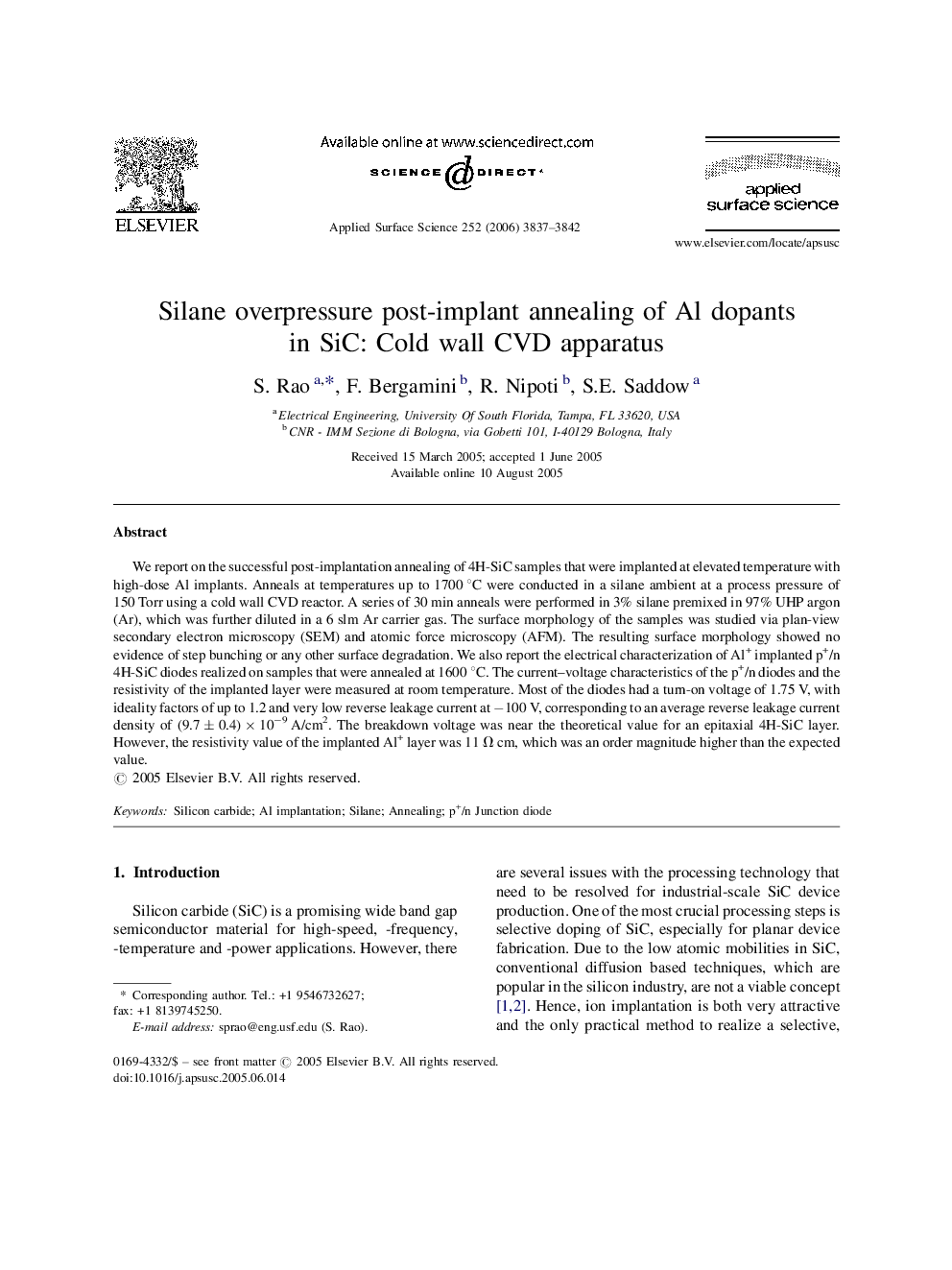| Article ID | Journal | Published Year | Pages | File Type |
|---|---|---|---|---|
| 5366687 | Applied Surface Science | 2006 | 6 Pages |
Abstract
We report on the successful post-implantation annealing of 4H-SiC samples that were implanted at elevated temperature with high-dose Al implants. Anneals at temperatures up to 1700 °C were conducted in a silane ambient at a process pressure of 150 Torr using a cold wall CVD reactor. A series of 30 min anneals were performed in 3% silane premixed in 97% UHP argon (Ar), which was further diluted in a 6 slm Ar carrier gas. The surface morphology of the samples was studied via plan-view secondary electron microscopy (SEM) and atomic force microscopy (AFM). The resulting surface morphology showed no evidence of step bunching or any other surface degradation. We also report the electrical characterization of Al+ implanted p+/n 4H-SiC diodes realized on samples that were annealed at 1600 °C. The current-voltage characteristics of the p+/n diodes and the resistivity of the implanted layer were measured at room temperature. Most of the diodes had a turn-on voltage of 1.75 V, with ideality factors of up to 1.2 and very low reverse leakage current at â100 V, corresponding to an average reverse leakage current density of (9.7 ± 0.4) Ã 10â9 A/cm2. The breakdown voltage was near the theoretical value for an epitaxial 4H-SiC layer. However, the resistivity value of the implanted Al+ layer was 11 Ω cm, which was an order magnitude higher than the expected value.
Keywords
Related Topics
Physical Sciences and Engineering
Chemistry
Physical and Theoretical Chemistry
Authors
S. Rao, F. Bergamini, R. Nipoti, S.E. Saddow,
